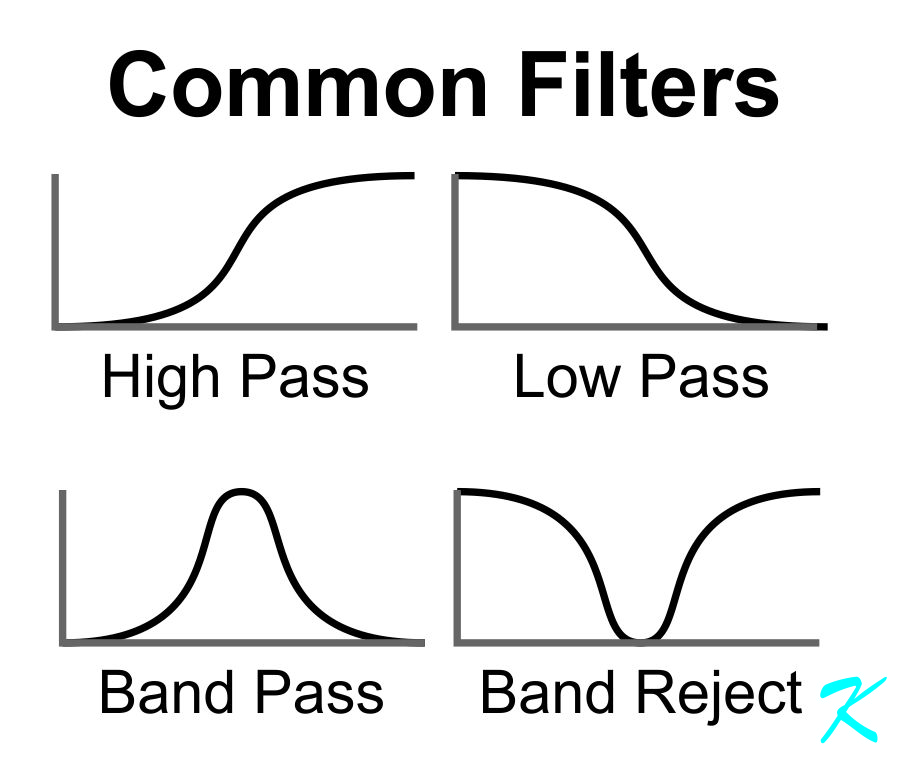It sounds like you do have a problem. I'm not sure what the problem is, but this is what I do know about filtering.
All fire alarm systems are highly regulated, and Notifier fire alarm systems are no exception. Any equipment used in a fire alarm system is required to be tested by someone like UL, ULC, FM, CE, CCC, etc., and placed on their list of things that work in that particular fire alarm system. How the system is wired outside the control boxes is also included in this testing and listing process. Unless Notifier has paid to have these filters tested and listed on their fire alarm system, Notifier cannot tell you that the filters can be used, or even if the filters work at all.
EMI/RF
EMI/RF stands for Electro-Magnetic Interference / Radio Frequency. It's a generic term for "Interference caused by electrostatic, magnetic, or both signals in the radio spectrum of signals." Depending on who you ask about what is included in the radio spectrum of signals, the low frequency end of the spectrum could be considered as low as 50 kHz, and the high end of the spectrum could be considered to reach the near infrared frequencies.
Example: Yes, I have found and fixed some interference problems where close-by AM radio stations interfere with the internal electronics of some fire alarm modules. In most of the places, "Air-Gap Filters" were used; a removeable metal bracket was removed from the module so there was air space between the module and the insides of the junction box; an air-gap was inserted between the interfering signal and the module. The manufacturer has since redesigned the mounting for the modules so the removable bracket is not included.
The conduit itself was part of the problem. Any conductor, including conduit, is a receiving antenna; the conduit was receiving the AM radio signal. In this example, the metal mounting bracket attached to the conduit's junction box (one antenna) was capacitively conducting the RF signal from the radio station into the module. The module was attached to the SLC control line (another antenna). In essence, the module was conducting signals between antennas.
Because the signal was getting into the module, the data-processing inside the module was being corrupted. To fix the interference problem, just removing the mounting bracket reduced the amount of RF signal getting into the module.
Example: Of course, EMF does not have to be in the radio frequency range. I've encountered EMI interference to some addressable smoke detectors in the 4,000 Hz to 8,000 Hz range. In that case, the interference caused the smoke detector to develop a fault, and if it was not fixed soon enough, the smoke detector would go into a full-blown false alarm. Changing the type of detector from an addressable photo detector to an addressable ion detector, or else moving the detector away from the EMI source, to a distance of 7 feet (about 2 meters), fixed that problem. Moving the detector would be "Air-Gap" filtering.
Example: Then again, when the fire alarm's Signaling Line Circuit (SLC) is in the same conduit as the power wires for air handlers, there's an EMI problem. At seemingly random times, the 60 Hz magnetic interference can cause the ground fault light on the panel to turn on and off. Getting the SLC out of the conduit where it doesn't belong fixed that issue. Again, getting the SLC out of the conduit where it doesn't belong could also be considered "Air-Gap" filtering.
Best Way to Filter
By far, separating the unwanted source of EMI/RF interference and the wanted signal is the best way of "Filtering" EMI/RF interference. This is Air-Gap Filtering.
When the interference can't be distance separated, the next best method is to electrically shield the EMI/RF interference from the wanted system, the wanted system is a Notifier fire alarm system. However, shielding takes design work.
Shielding
Conduit can also be used as a shield to prevent unwanted signals from reaching the circuit. It can encase the wires in a grounded metal shield.
When there's EMI/RF interference, though, even using the conduit as a shield takes designing.
BE EXTREEMLY CAREFUL of how the system is shielded. On the Signaling Line Circuit (SLC) for a Notifier fire alarm system, Notifier specifies that the wires ARE NOT SUPPOSED TO BE SHIELDED. This is because of the capacitive lag induced into the SLC when shielded wire is used. The capacitive lag, if shielded wire is used, corrupts the data so the whole fire alarm system becomes useless.
Conduit does not affect capacitive lag very much, so instead of using shielded wire, conduit is OK to use as a shield.
Passive Filters
Passive filters use capacitors or inductors. Sometimes the capacitors and inductors are combined, and even resistors can be used. A ferrite bead doesn't look like it, but it is an inductive filter.

Passive filters are not sharp cut-off filters. They may be rated to:
- Pass signals below a certain frequency - Low Pass Filter
- Pass signals above a certain frequency - High Pass Filter
- Pass through certain frequencies - Band Pass Filter
- Block certain frequencies - Band Reject Filter
The effect of the passing and blocking of signals, though, reaches far outside the range shown in the literature. You have to read their data sheets to know what the filters really do.
Unless the passive filters are carefully designed for the specific system, passive filters, like EMI/RF filters, won't always help, and sometimes prevent proper operation of a fire alarm system.
Douglas Krantz


